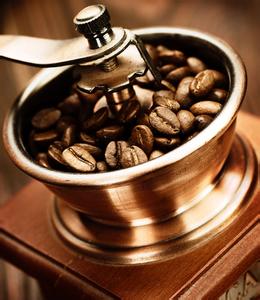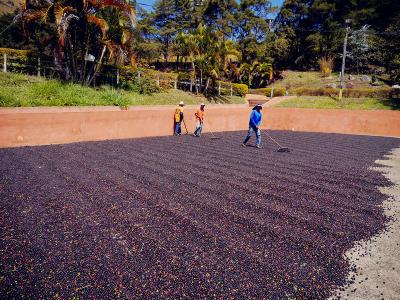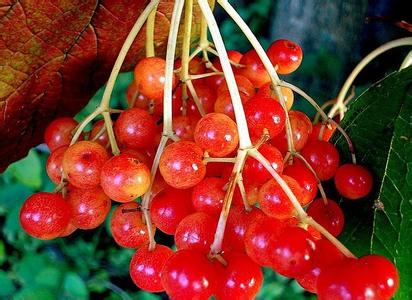Description of Flavor of Coffee beans treated with Honey in Solar Water A brief introduction to the grinding scale of taste treatment method
Description of Flavor of Coffee beans treated with Honey in Solar Water A brief introduction to the grinding scale of taste treatment method
Once the fermentation is complete, the coffee with the endocarp enters the flushing channel and is washed away by a large amount of water.
Clean coffee with endocarp enters the drying process, and at this stage, there are a variety of drying methods: direct sunlight, combination of sun drying and machine drying, combination of shade drying and sun drying, and so on. It usually takes 10 days to a month to keep the moisture content stable at around 12%.
After all the above steps are completed, the coffee with endocarp will be placed in a sack and left in place for 2-3 months, often referred to as raw beans in Latin America, making the quality of the coffee more stable.
Finally, the coffee is shelled, the endocarp that protects the raw coffee beans is removed, repackaged, exported and sold.
The general characteristics of washed coffee: clean, bright, sweet and sour, medium mellow thickness; tend to apple, lemon and berry acidity, milk and sweet chocolate, caramel, nut flavor.
When coffee cherries are picked from trees, they are usually placed in a pool full of water for branches, leaves and density screening: overripe and undermature coffee cherries float to the surface because they are not dense enough, and coffee fruits that are ripe enough will sink to the bottom of the pool.
Then enter the peeling and pulp machine to remove the outermost layer of peel and pulp. At this time, the coffee enters the fermentation stage with residual pulp and pectin. The fermentation mode and duration of each producing area varies according to the local climate: Latin America will ferment for 12-36 hours in a pool full of water and under the action of microorganisms, while the usual practice in Kenya is to let coffee with pectin react naturally with microorganisms in the air. to remove the gum.

Important Notice :
前街咖啡 FrontStreet Coffee has moved to new addredd:
FrontStreet Coffee Address: 315,Donghua East Road,GuangZhou
Tel:020 38364473
- Prev

How long is the shelf life of ripe coffee beans?
How long is the shelf life of coffee cooked beans? the shelf life mentioned in the packaging of general coffee means that the aroma components of coffee can be retained to a certain extent. Not when the coffee may go bad. Because coffee is different from ordinary food, its humidity is very low and it is not easy to deteriorate. After making coffee, the waste coffee grounds grow hairy, just because the coffee grounds get wet.
- Next

How long can coffee trees live at most? the natural drying growth cycle of coffee beans.
How long can coffee trees live? the natural drying growth cycle of coffee beans the western and southern parts of Yunnan Province are located between 15 north latitude and the Tropic of Cancer, most areas are 1000-2000 meters above sea level, and the topography is dominated by mountains and slopes. Here, with fertile land, sufficient sunshine, abundant rainfall and large temperature difference between day and night, the unique natural conditions have formed the particularity of Yunnan small seed coffee taste.
Related
- Guji coffee producing area of Guji, Ethiopia: Humbela, Shakiso, Wulaga
- What is the most expensive variety of Qiloso in BOP multi-variety group?
- How to store the coffee beans bought home?
- Why are Yemeni coffee beans so rare now?
- Ethiopian Sidamo all Red Fruit Sun Sun Santa Vini Coffee beans
- SOE is mostly sour? What does it mean? Is it a single bean? what's the difference between it and Italian blending?
- Is Italian coffee beans suitable for making hand-brewed coffee?
- How to choose coffee beans when making cold coffee? What kind of coffee beans are suitable for making cold coffee?
- Just entered the pit to make coffee, what kind of coffee beans should be chosen?
- Can only Japan buy real Blue Mountain Coffee? What are authentic Jamaican Blue Mountain coffee beans?

